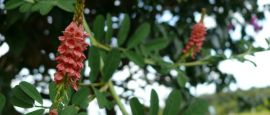French Guiana's capital has a lively buzz with a tropical Creole flavour. You could see its main sights in a day, including the residence of the Prefect in the Place de Grenoble, the Canal Laussat, and the Botanical Gardens. The Musée Départemental Franconie and the Musée des Cultures Guyanaises feature good exhibits on indigenous peoples and the penal settlements on Devil's Island.
French Guiana things to see and do
Tourist offices
Address: 12 rue Lallouette , Cayenne Cédex , 97338 , French Guiana
Tel: (594) 296 500.
www.tourisme-guyane.com
Explore the jungle interior in a dugout canoe. Trips range from an hour and a half to full day adventures and take place throughout the country, including the Kourou, Iracabo, Counamana and the lower Sinnamary. The rivers are a mixture of calm water and more challenging rapids, such as those at Hermina.
Sea fishing is a popular sport, which you can do from Cayenne’s rocky shore, as well as from boats in the open sea. Freshwater fishing and fly-fishing are also popular on the lakes and rivers. Cayenne-based Amazon Fishing Tours runs a variety of sea-fishing trips or to Petit Saut Lake, Mana and Kaw Swamp.
Guyana’s most famous attractions is the Iles du Salut archipelago, which includes the infamous Devil's Island, where political prisoners and Henri Charriere’s Papillon were held. Do not miss the Iracoubo Church painted entirely by hand by the famous convict Huguet. There is a hotel (an ex-mess hall for the prison warders) on Ile Royale.
Discover nature and wildlife at the Mouragues Nature Reserve, which stretches from Roura to Régina and is renowned for its diverse scenery and flora. Head south towards Brazil to the Kaw Swamps, near Roura, which are host to many species of birds, such as the toco toucan and the flamingo, as well as caiman.
Much of the interior of the country is covered with huge swathes of primary tropical forest, protected as a national park. You can buzz over the jungle canopy on a microlight plane, or negotiate the winding trails on a mountain bike, with trips organized in Cayenne, Saül, Montsinery-Tonnegrade, St Laurent and St Georges.
Carnival starts after Epiphany and goes on until Ash Wednesday. Every Sunday for over two months, carnival groups in Cayenne, Kourou and St Laurent de Maroni parade to frenetic music in multi-coloured costumes. Mardi Gras is the parade of the red devils. Ash Wednesday sees the crowd dressed in black and white to witness the death throes of King Carnival.
A gateway to another universe, the city of Kourou is home to the Guyana Space Centre, which happens to be the European Space Agency’s main spaceport. Ultra-modern buildings dominate the city; there are several restaurants and a couple of good hotels, too. If you’re lucky your visit might coincide with a rocket launch; the picturesque Fourgassier Falls, located about an hour away, are a good place to cool your heels.
Leatherback, green and olive ridley turtles all come to nest and lay their eggs on Guyane’s isolated beaches. The animals are closely protected but you can join a tour to watch them at Remire-Montjoly, Cayenne's best beach, or at Amana, in the west. Leatherback turtles lay their eggs from April to July, green turtles from Jan to May, and olive ridleys from June to August.
The Wayana are some of the last remaining Amerindian people living along the north coast of South America. Many still follow traditional lives, supplementing their incomes by selling handicrafts to tourists. You can visit riverside Amerindian villages in Haut-Maroni and Haut-Oyapoc. Visits are restricted and a permit must be obtained from the Préfecture in Cayenne.
Do you have any Feedback about this page?
© 2025 Columbus Travel Media Ltd. All rights reserved. No part of this site may be reproduced without our written permission, click here for information on Columbus Content Solutions.








 You know where
You know where